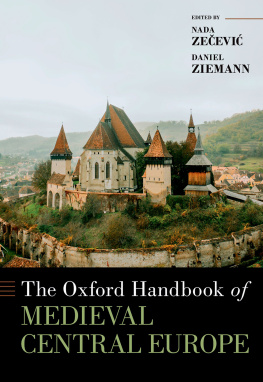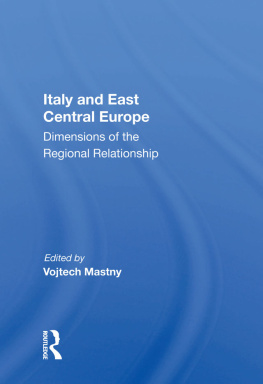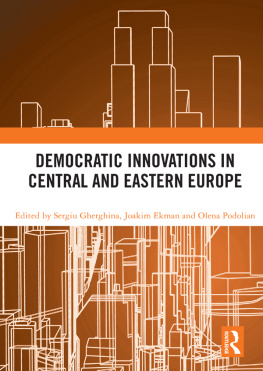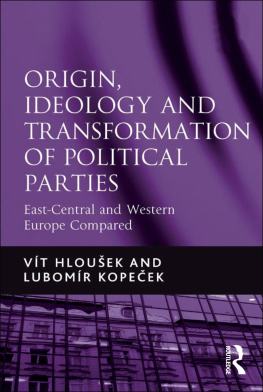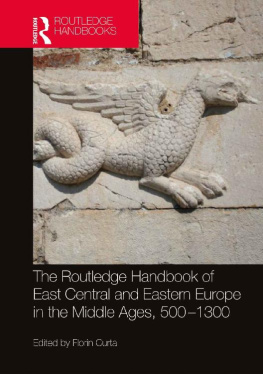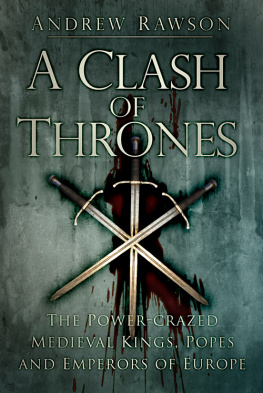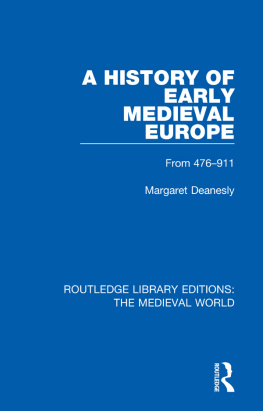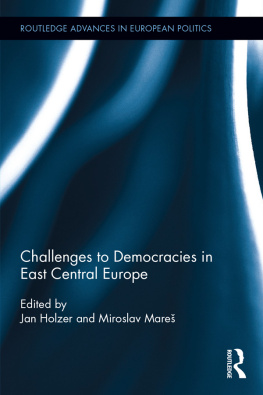First published 1964 by Longman Group Limited
Second edition 1985
Third edition 2001 by Pearson Education Limited
Published 2013 by Routledge
2 Park Square, Milton Park, Abingdon, Oxon OX14 4RN
711 Third Avenue, New York, NY, 10017, USA
Routledge is an imprint of the Taylor & Francis Group, an informa business
Copyright 1964, 1985, 2001, Taylor & Francis.
The right of Daniel Waley and Peter Denley to be identified as authors of this work has been asserted by her in accordance with the Copyright, Designs and Patents Act 1988.
All rights reserved. No part of this book may be reprinted or reproduced or utilised in any form or by any electronic, mechanical, or other means, now known or hereafter invented, including photocopying and recording, or in any information storage or retrieval system, without permission in writing from the publishers.
Notices
Knowledge and best practice in this field are constantly changing. As new research and experience broaden our understanding, changes in research methods, professional practices, or medical treatment may become necessary.
Practitioners and researchers must always rely on their own experience and knowledge in evaluating and using any information, methods, compounds, or experiments described herein. In using such information or methods they should be mindful of their own safety and the safety of others, including parties for whom they have a professional responsibility.
To the fullest extent of the law, neither the Publisher nor the authors, contributors, or editors, assume any liability for any injury and/or damage to persons or property as a matter of products liability, negligence or otherwise, or from any use or operation of any methods, products, instructions, or ideas contained in the material herein.
British Library Cataloguing in Publication Data
A catalogue record for this book is available from the British Library
Library of Congress Cataloguing in Publication Data
A CIP datalog record for this book can be obtained from the Library of Congress
ISBN 13: 9780582258310 (pbk)
Typeset by graphicraft Limited in 10.5/12pt Garamond MT

L ater Medieval Europe now appears in a considerably longer version and with much augmented reading lists. Two of the ) are entirely new. The book is the work of two authors, the original one (Dr Waley) and the editor of the third edition (Dr Denley). The new edition has been undertaken in the shared belief that, whatever changes in historiographical fashion and focus there have been, an understanding of, and access to, the political history of the period continue to be important for aspiring medievalists of all kinds. The revisions and additions reflect this view, bringing the text up to date in the light of recent research, and expanding it further beyond the confines of western Europe in particular, but not attempting to cover new areas and sub-disciplines of history. The text has been rearranged and sub-divided for the convenience of the reader. A particular feature of the book, its frequent recourse to the voices of contemporaries, has been further documented wherever possible, and references to published English translations of sources have also been added (except in the case of works such as Dante's Comedy and Machiavelli's The Prince, which appear in too many editions for page references to be helpful). A major change has been the inclusion at the end of each chapter of substantial bibliographical notes, both to reflect the developments in the subjects covered since the first edition of the book, and to provide detailed guidance for students and teachers alike on what is available in English. An explanation of the thinking behind this, and suggestions on how these sections can be used, appear in the Bibliographical note.
Each of us would wish to thank his wife for their great support and helpful suggestions.
D. P. W.
P. R. D
December 2000

T he aim of this book is to serve as an introduction to the history of Europe between the middle of the thirteenth century and the early part of the sixteenth. I hope to persuade my readers that this is an interesting period, and I have quoted a good deal from contemporary writings, because men's ipsissima verba are surely bound to be more striking and more convincing than the secondary conclusions drawn from them. I have also assumed in my readers diverse intellectual temperaments. Those who are not attracted by past politics may find more interest in past economics, or in religion or art or the history of ideas, and quite substantial sections of the book are devoted to each of these topics. Yet politics remain the staple diet of the historian, and I have taken as my principal subject the growth of the power of the State and the manner in which this is reflected in ideas concerning politics. In treating a series of diverse themes I have tried to keep this main thesis in view. Thus, while the book begins and ends with contrasting chapters on the State and men's notions about it in the thirteenth century and the early sixteenth century, the chapter on the early Renaissance touches on the intensification of civic spirit, while, of the two chapters primarily concerned with religion, the former emphasises the patriotic element in the Hussite movement and the latter the decisive religious consequences of Germany's uncharacteristic political disintegration.
My thanks are due above all to my wife and to my friend Dr E. B. Fryde, who read the work in typescript: both of them have helped me with many suggestions. I have also benefited gratefully from the advice of Dr A. R. Bridbury (on ).
D.P.W
T he first edition of this book appeared in 1964. Written twenty years ago, it bears the imprint of its generation, not least in the opinion, recorded in the Preface, that politics remain the staple diet of the historian. The saying that everything has a history would never have met with disagreement, but History as an educational subject, with syllabuses and examinations, and even as a field for study and publication, has been confined by convention within quite narrow boundaries. To recover the entirety of past situations and events does not make sense as an objective. Limits and definitions, dictated by the nature of surviving evidence from the past as well as by the practical realities of research and education, are a necessity for the historian.


